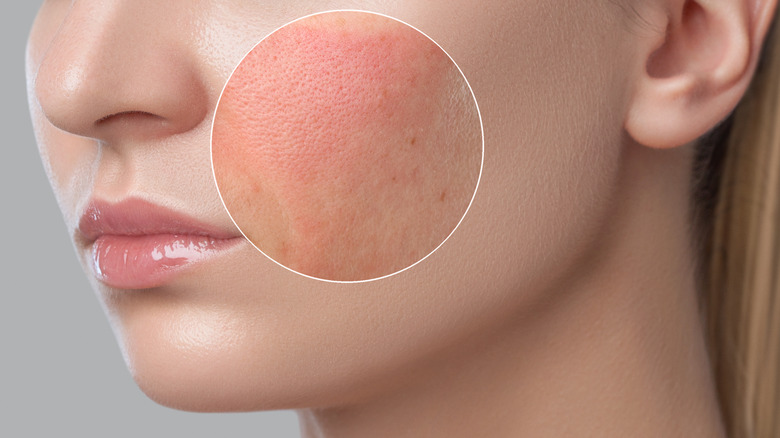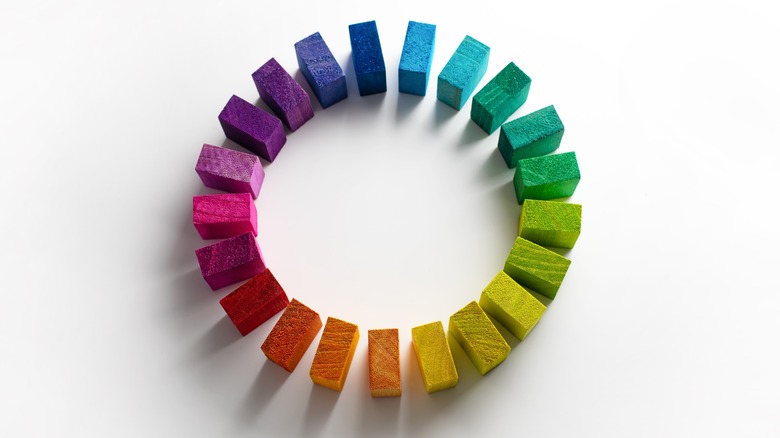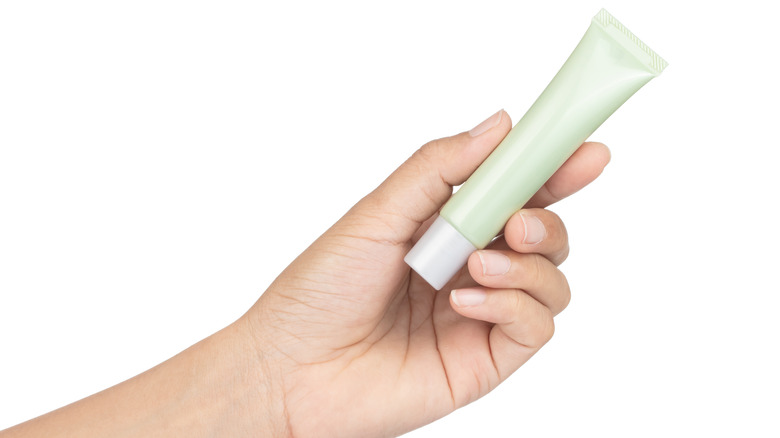If Your Face Is Always Flushed, Green Concealer Will Be Your New Best Friend
Covering facial redness with makeup can be very frustrating. No matter how much makeup you use, sometimes it just doesn't work. Chronic sensitivity, rosacea, or blemishes are just a few examples of what could be causing redness. Finding a balance between certain skin conditions or skin tones and makeup that works well with them could be a challenge. However, it is important to think about skin tone differently.
Just as you may have learned in art class, it's important to note that skin tone is not one singular color. For starters, your skin contains an undertone that could determine if it is on the "cool" or "warm" spectrum of colors. According to Good Housekeeping, a good way of determining this is by looking at the veins on your wrist. If they look bluer, you have a cool undertone, whereas if they look more green, you have a warm undertone. Knowing this information can be helpful in figuring out how to approach your makeup application. And because everyone's skin tone is vastly different, even down to the smallest details or skin conditions, color theory plays a big role in this. In comes green concealer, a magic of sorts that can help with any redness on your face (via Good Housekeeping).
What is green concealer?
Think back to when you learned about color theory using a color wheel when you were younger. If you take a look at where red is located, green is right across from it. This means that green cancels out red, so it can cover or neutralize it better. Warm and cool tones on a color wheel are always on opposite sides of each other. This is why green concealer may be your new go-to if you wish to minimize redness on your skin (via Sheldon Bruck).
"It helps to identify your undertone in order to harmonize and balance skin tone with the appropriate foundation and concealers," professional makeup artist Daniel Martin tells Byrdie. "When trying to find the right shades, I like to match from the center of the face down to the middle of the neck, as this will give you the most accurate representation and allow you to see any redness you may want to cancel out."
Additionally, many professionals say color-correcting concealers should be applied under your foundation. Start by checking for the red spots you are trying to target. This is usually under your eyes and in the corners of your eyes. Look for blemishes or any other redness on the rest of your face as well. Once you've determined where to apply concealer, do so by using a brush with a light tapping motioNext, proceedeed to apply your regular foundation on your face after letting the concealer settle in for a few minutes. When you get to the area with concealer, make sure to gently pat your foundation over it to give it a smooth blend (via L'Oréal Paris).
Picking a concealer
If you're ready to try a green concealer, you need to determine which one is best for your skin tone because they also come in different shades. According to Healthline, a pale green concealer works best if you have lighter skin or just minor blemishes or redness you're trying to cover up. If you have darker skin or want to cover some heavier red spots, opt for a dark green concealer. If you're using concealer to cover up redness caused by sensitive skin due to acne, rosacea, or other skin conditions, you might want to consider finding concealers that won't irritate it more. Healthline suggests finding one free of oils, fragrances, or harsh alcohols. If you want to play it extra safe, speak to a dermatologist about what ingredients may be the safest for your skin condition.
It's also important to keep in mind that green concealer will only help with covering up any redness, but it won't get rid of it. If you want to take it a step further, always seek treatment with a dermatologist first.


